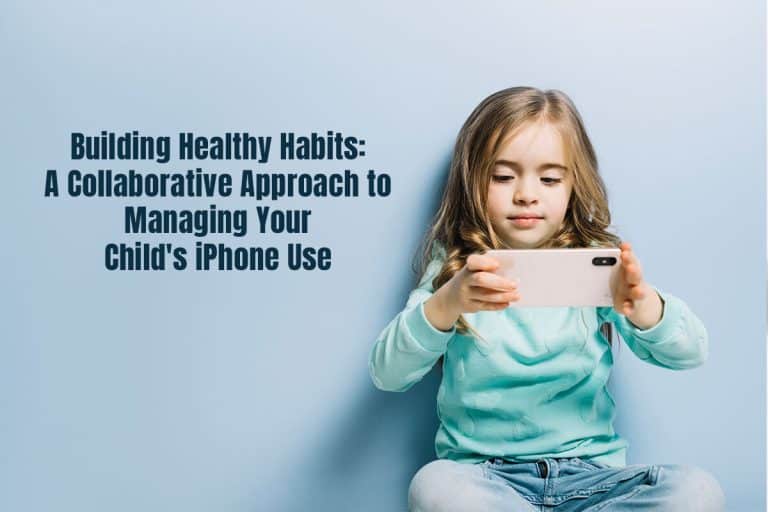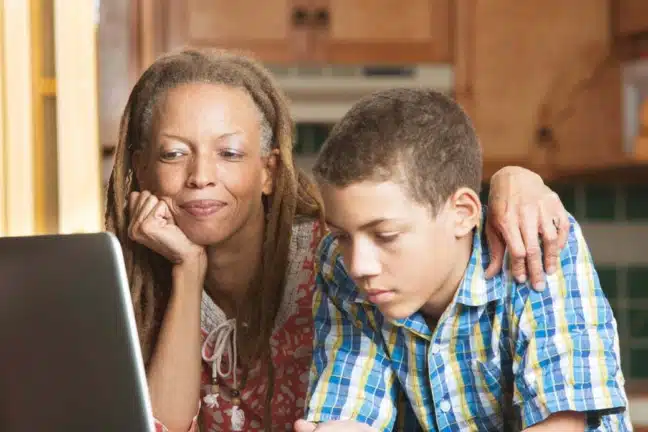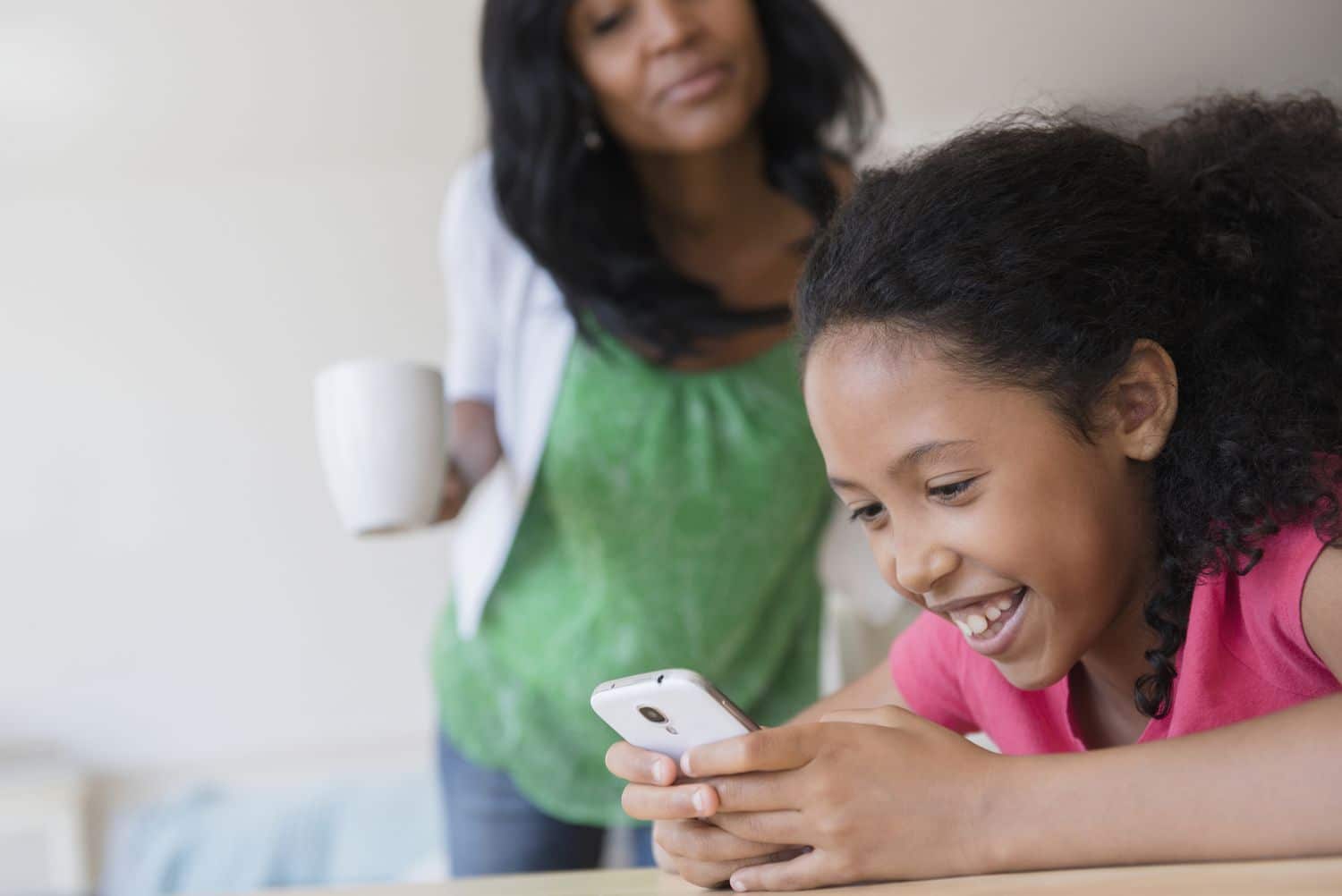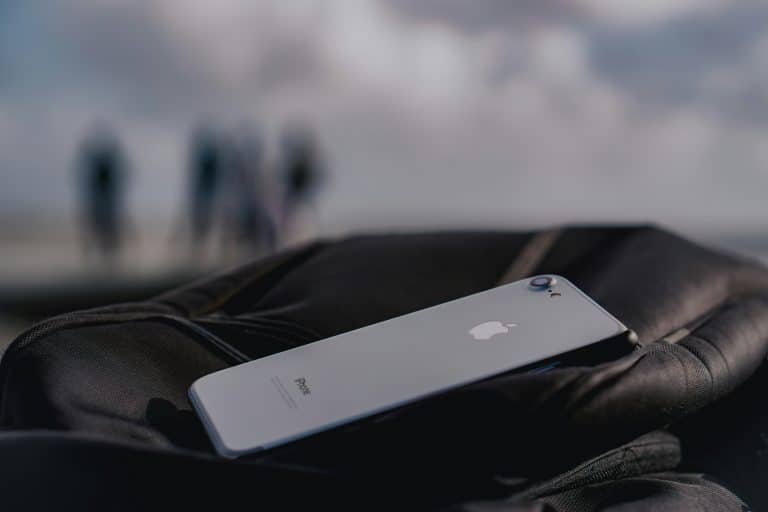Navigating the digital landscape is a big part of parenting today. Smartphones can be amazing portals to knowledge and fun, but too much time spent on them can have a downside for kids. It’s not just about setting screen time limits; it’s about guiding them to use technology in a way that’s healthy and balanced.
We’re exploring some creative strategies for families to manage smartphone habits effectively. It’s about teamwork and talking things through with your kids, so they understand the value of moderation. This approach helps integrate technology into life in a positive way, without letting it take over.
Setting Clear Expectations Together
Instead of just laying down the law, have an actual conversation with your kid about reasonable iPhone boundaries. Get their input on what they think is fair in terms of time limits, app restrictions, all that jazz. The key here is making them feel heard and involved, not just dictated to.
That way, they’re way more likely to actually follow the rules. Plus, it opens up an honest dialogue about why certain guidelines are in place – maybe you’re worried about their sleep schedule or want to limit mindless scrolling. Whatever the reasons, laying ’em out there builds trust and accountability on both sides.
Modeling Healthy Behavior
Kids are little sponges, soaking up all our habits whether we realize it or not. So if we’re treating our phones like a demanding side-piece, constantly getting distracted mid-conversation or zoning out while binging TikToks, that’s the example we’re setting. Instead, make an effort to go phone-free during family time.
Put that bad boy on Do Not Disturb and actually be present. And when you do need screen time, keep it intentional and balanced with other activities. Seeing you use tech responsibly makes a bigger impact than a thousand lectures.
Creating Tech-Free Zones and Times
Designating certain areas and periods as no-phone zones is a smart way to reintroduce boundaries in your home. Maybe the kitchen and bedrooms are off-limits, or you all ditch devices after 8 pm to reconnect as a family.
You could also make mealtimes a sacred, distraction-free space to really engage over food. You can show them how to limit screen time on iPhone during these periods by reducing screen timeout, thus causing the phone to get locked automatically and preventing them from using it.
Get creative and mix it up – the goal is making sure your lives don’t solely revolve around those little glowing rectangles. Having enforced breaks builds discipline and reminds you there’s a whole world to experience beyond the screen.
Using Parental Controls Collaboratively
Parents embracing parental controls on phones is about as shocking as water being wet. But instead of just flipping those restrictions on in dictator-mode, why not walk your kid through the process? Explain your reasoning, get their take on what’s reasonable to block/limit, and compromise where you can.
Maybe you whitelist educational apps but put a leash on mindless games. Or you enable downtime windows but let them earn bonus periods through good behavior. The transparency builds way more goodwill than a locked-down phone inspiring resentment.
Encouraging Open Communication
Not every conversation with your kids has to be one-sided lectures about their phone overuse. Instead, keep those lines open by genuinely listening to their perspective without judgment. Ask what they find so appealing/addictive about certain apps or sites.
Or what feelings underlie that constant urge to scroll or game. Then you can provide collaborative guidance on fostering healthier habits. Creating a safe space to just discuss this stuff is key to addressing the root issues – not just treating surface symptoms through harsh crackdowns.
Setting Goals and Rewards
Humans respond way better to positive reinforcement than rigid punishments. So get your kid’s buy-in by collaborating on reasonable, incremental tech goals to work toward. Started leaving the phone in another room during homework sessions?
Treat them to a milkshake. Read a book for an hour before bedtime scrolling? Message them a goofy sticker celebrating the W. Having tangible incentives to reach for – ones you’ve agreed upon together – makes achieving those milestones rewarding versus feeling restrictive. Celebration makes change sustainable.
Exploring Alternative Activities
If smartphones are the only pacifier, of course that’s what kids are gonna keep craving. But expose them to other enriching interests and hobbies that scratch that novelty itch in healthier ways.
Maybe they get jazzed about joining a youth group, coding club, or sports team. Or develop a love for creative outlets like art, music, or writing. By diversifying how they spend their free time, an iPhone’s gravitational pull starts to loosen. You’re giving their brain’s reward centers other fun avenues to explore.
Monitoring and Adjusting Strategies
Like any good experiment, you gotta keep close tabs on what’s working and what needs refining in your approach. If your kid is still exhibiting phone-addicted tendencies despite your tactics, regroup and iterate on solutions together.
Likewise, celebrate when a certain strategy (like tech-free dinners or a new coding hobby) is paying dividends in more balanced behavior. Getting their feedback, being transparent about monitoring their use, and flexibly optimizing your game plan as needed – that’s how you make this a collaborative, sustainable lifestyle adjustment. Not shocking their dopamine system into a cold turkey withdrawal.
Conclusion
Working together to figure out how your kid uses their iPhone goes beyond just making rules. It’s about building a space where everyone talks openly, respects each other, and shares the load. When kids get a say in how things go, they learn to manage their own screen time and make smart choices about when to swipe and when to switch off.












